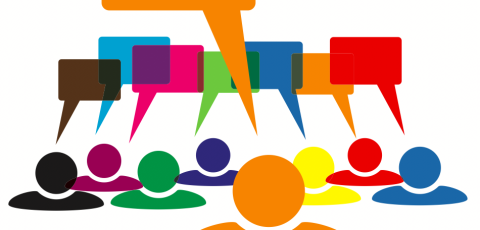Today’s Brand Advocacy: Influencer Marketing

Buzz. All brands need it and events are no exception. Attendees put a lot of faith into their peers’ opinions, putting a level of trust in their perspectives that is higher than any brand could hope to earn independently.
“Brand advocates have become increasingly important within the marketing mix for all events,” said Ed Several, senior vice president at Reed Exhibitions. “Today, the customers we serve often look to influencers within their industry to understand how best to participate in an event.”
Renee Lewis, an event designer who works with the Council of Engineering and Scientific Society Executives’ (CESSE) event, ACCESSE, referenced the fact that most people check out online reviews for products, service providers or restaurants now before making a purchase.
“Brand advocates can act much like those online reviews, providing credibility and first-hand accounts to those considering to attend and are the most powerful way to convince new attendees to attend,” she said.
According to Bob James, president and chief storyteller at Bob & David James, events need to address brand advocacy in two ways: old fashioned word of mouth and modern influencer marketing.
The first approach, getting your customers to talk about you, requires that you deliver an experience that assures people will talk about it, while the latter involves targeting and cultivating influencers within the industry. Influencer marketing is the more powerful tool because these individuals reach more people than your average attendee, offering a stronger, more credible voice to these larger circles.
To expand word of mouth, Lewis recommended starting with the leadership, because they are typically the most engaged individuals in the organization.
“We have each of our board members call the leaders of 20 organizations,” she said. “We provide talking points and list of organizations to call.”
Engaging other stakeholders such as exhibitors, sponsors, planning committees and past attendees can increase the numbers of advocates. Lewis suggested obtaining video testimonials, having them write blogs and social media posts, or sending personalized emails.
In terms of engaging industry influencers outside of immediate participants, show organizers can establish strategies to engage influencers. A few ideas include:
- Identify, reclassify and cultivate them.
“CES has been a leader in the field when it comes to this,” James explained. “They began admitting bloggers in 2008 (before that time, bloggers weren’t considered “journalists).”
He added, “Set up blogger lounges, offer discounted/free admission like press and profile, or spotlight them by quoting them on your blog or sharing their material.”
- Make friends with bloggers.
Know who they are and befriend them (as done with publishers in the past, when organizers would trade ad space for exposure at a show).
- Think like an old-fashioned press secretary.
“Be ready with soundbites, avoid jargon, and help them shape the narrative,” James suggested.
- Allow access at the event.
“Brand Advocates are influential because they are trusted by your customers,” Several explained. “To maintain that trust, advocates must know “why” certain decisions are made, feel they can offer opinions on improvement and learn about changes directly from the organizers. The more connected the brand advocates feel to the people producing the event, the more trust they will feel and more valuable they will be.”
- Amplify the event through influencers.
Give them plenty of opportunity to broadcast their perceptions and opinions. They will reach a lot of people globally.
“Work with your decorator and get creative,” James said. “Think about photography for social media. What opportunities can I provide at my show for backdrops that speak louder than words? What if an influencer videoed their experience with their phone—what would it show?”
For example, in 2015, as the culmination of a #WhyIWeartheBadge campaign launched during Police Week, the International Association of Chiefs of Police (IACP) set up a graffiti wall and “Why I Wear the Badge Walkway” at its annual conference. This was a place where people could take pictures, post messages and share on social media. There were 9,725 mentions by 4,500 users in the five months leading up to IACP 2015. The hashtag still gets used today.
- After the event, don’t go home and take the year off.
Influencer marketing strategies do not follow a typical event marketing cycle.
“It’s critical to follow influencers, get engaged and comment – feedback is encouraging,” James stressed. “Influencer marketing is year-round.”
According to Several, it’s important to identify the value that’s important to each influencer, continue to nurture the relationship and ensure it is a “two-way effort.”
“You need to share details from your event and be open to listening to ideas from the brand advocates,” he suggested. “This will provide important insight and build trust between your event and the ambassadors.”
In summary, think about brand advocacy in a multifaceted way: attract them, build relationships, feed them your narrative, provide them love and provide creative settings to tell your story.
“The keys to maintaining relationships with brand advocates are to keep them informed about the event, let them know the success of their efforts and thank them in multiple ways,” Lewis said.
With this effort in place, show organizers can find increased success.
“They’ll say things about you, you won’t say about yourself,” James added.


Add new comment